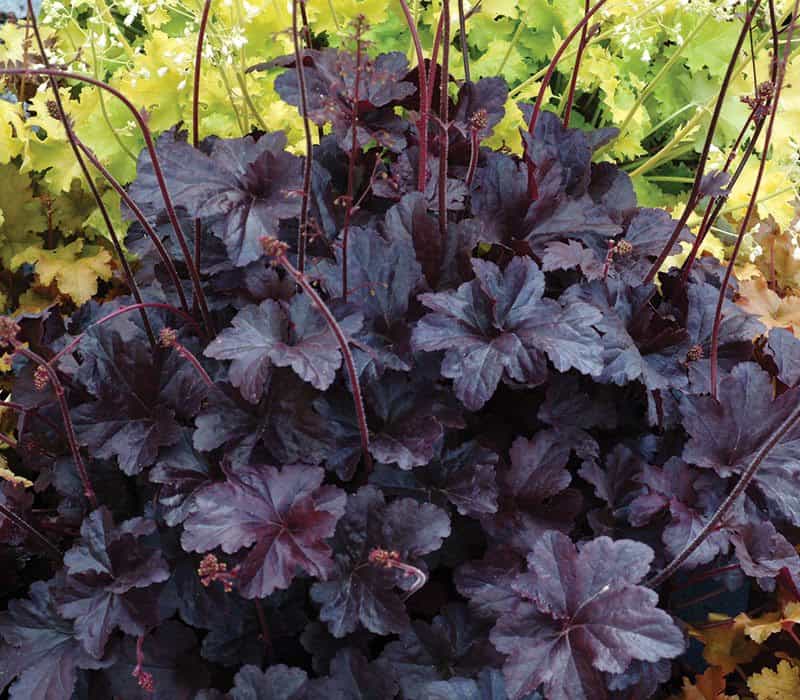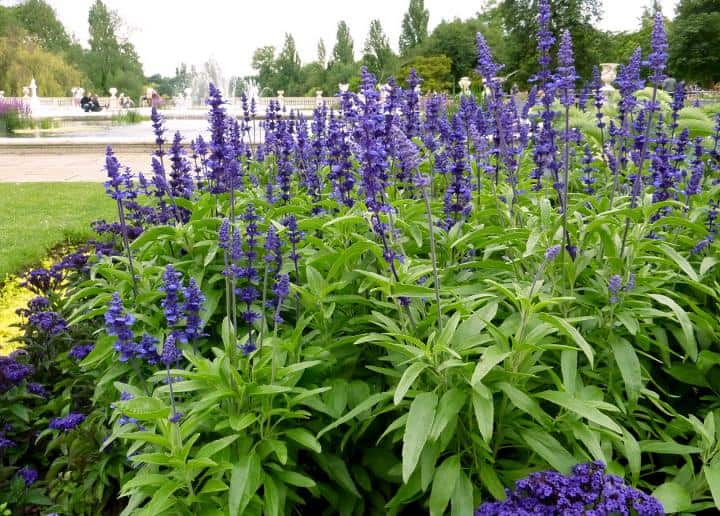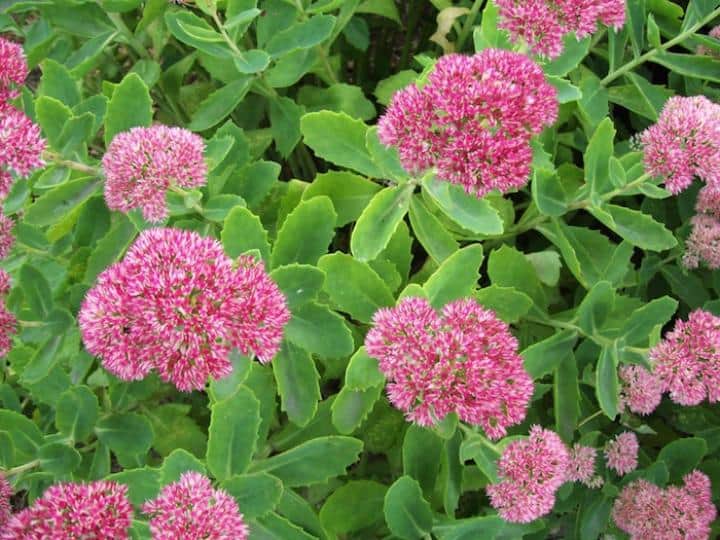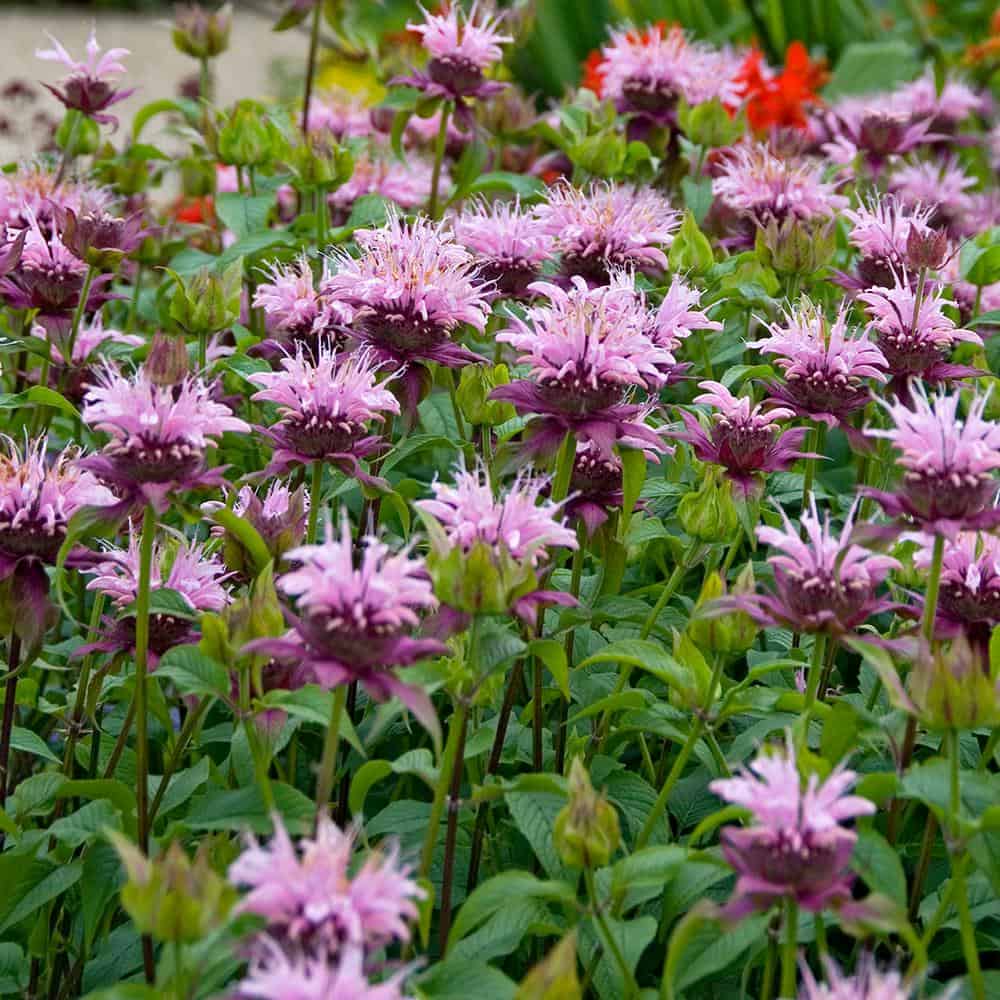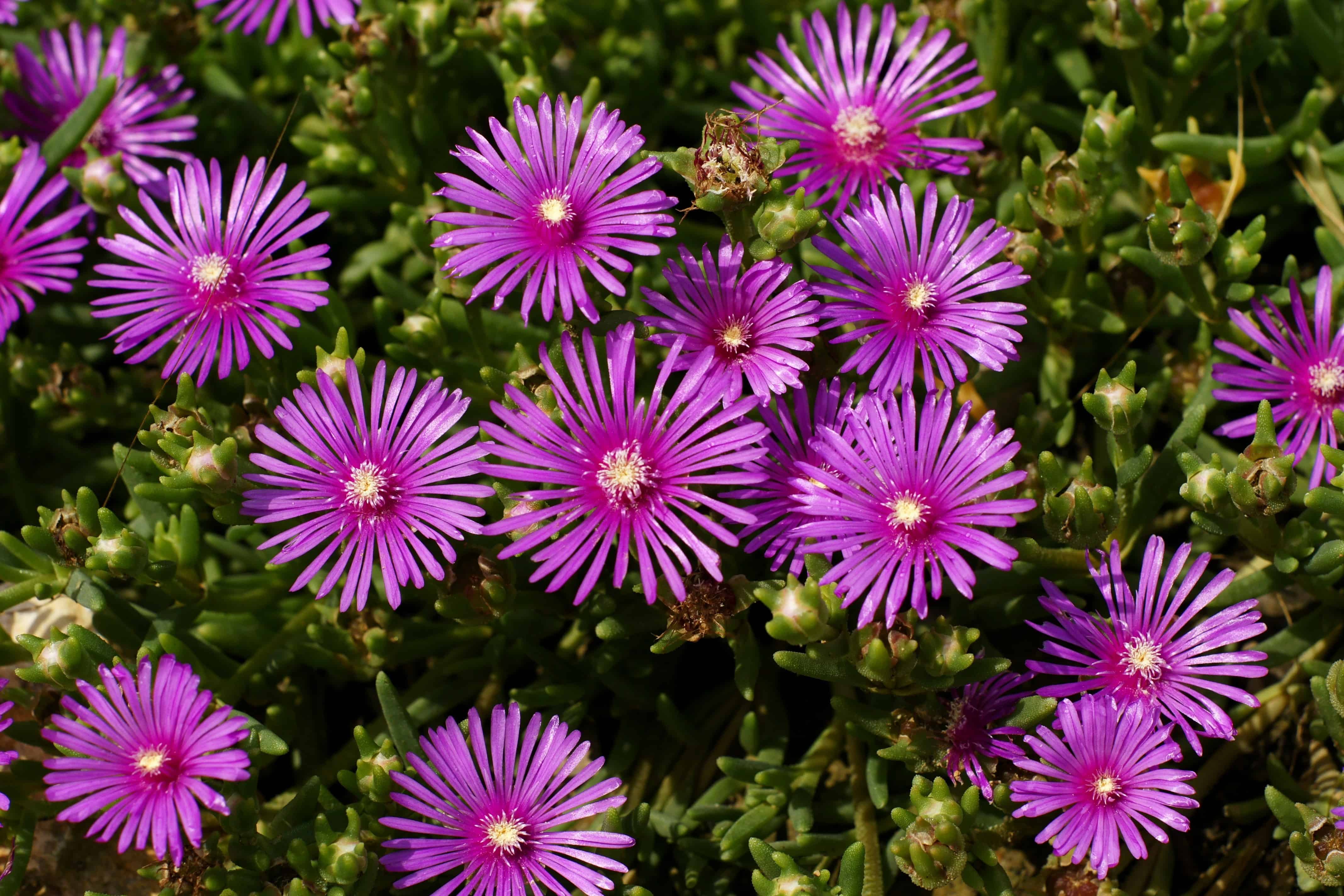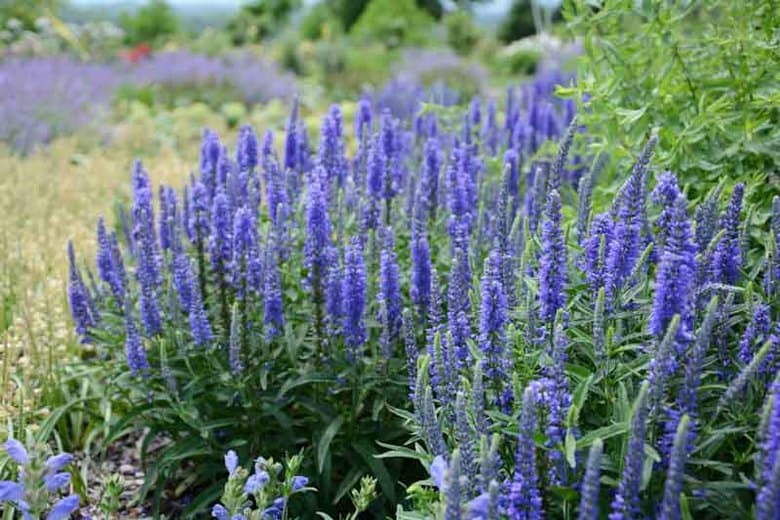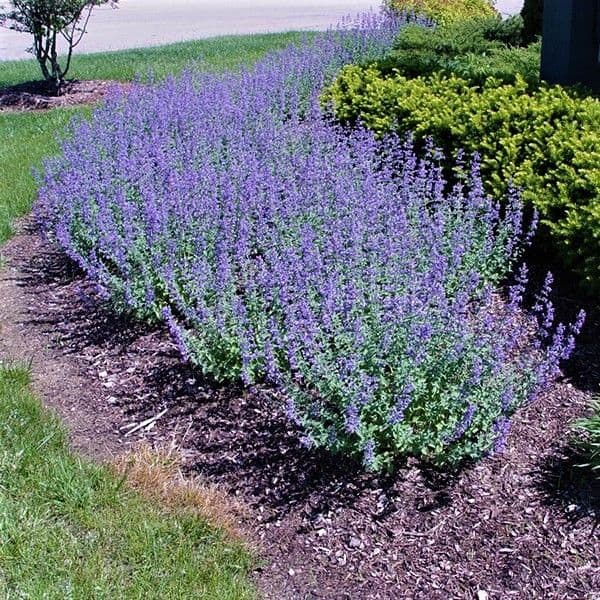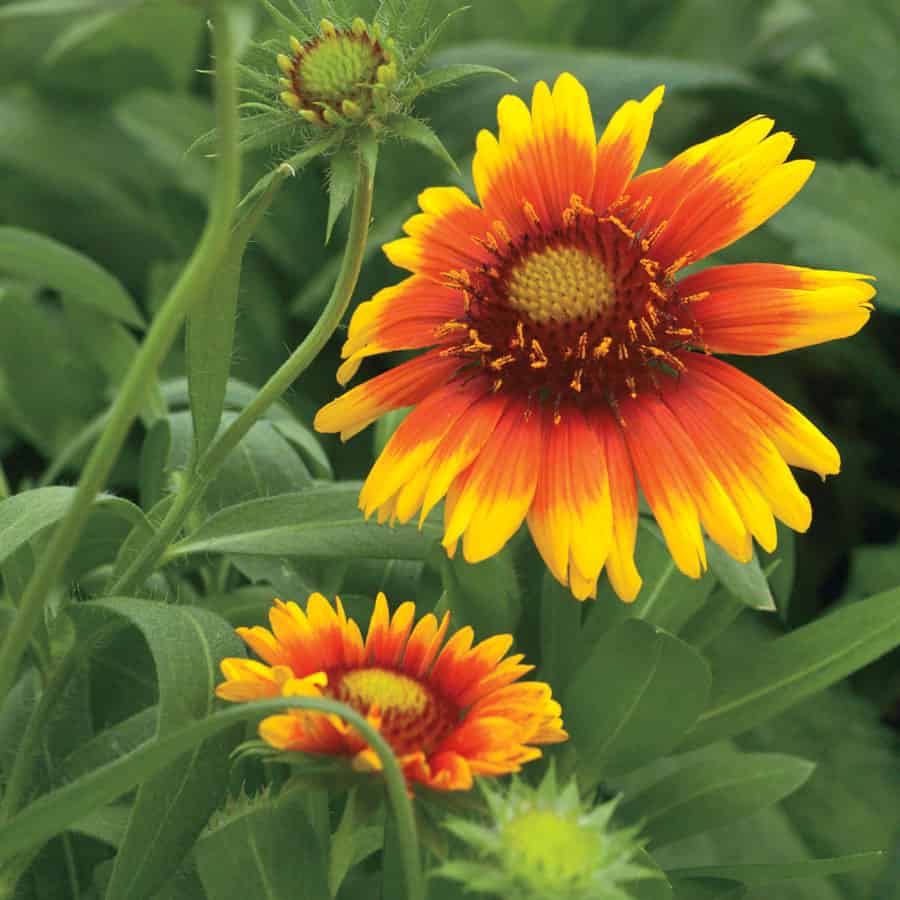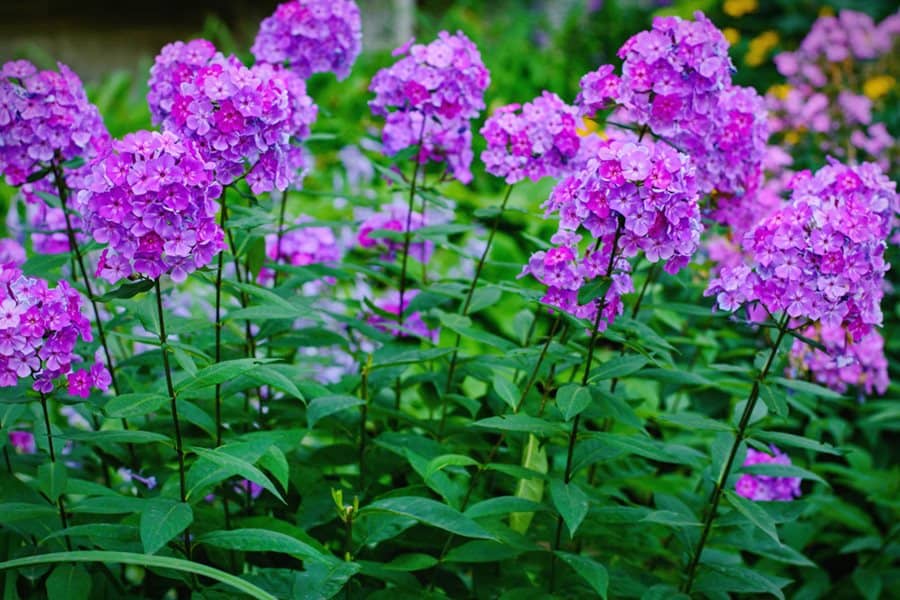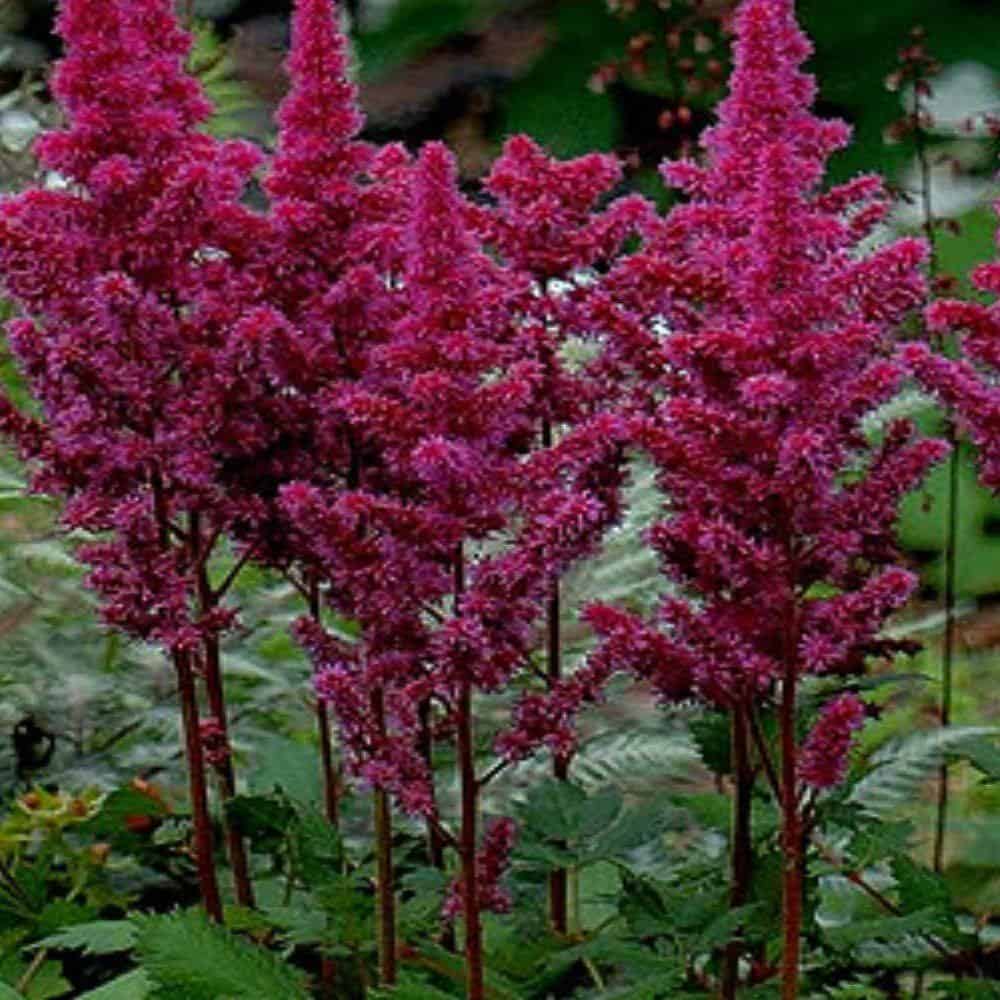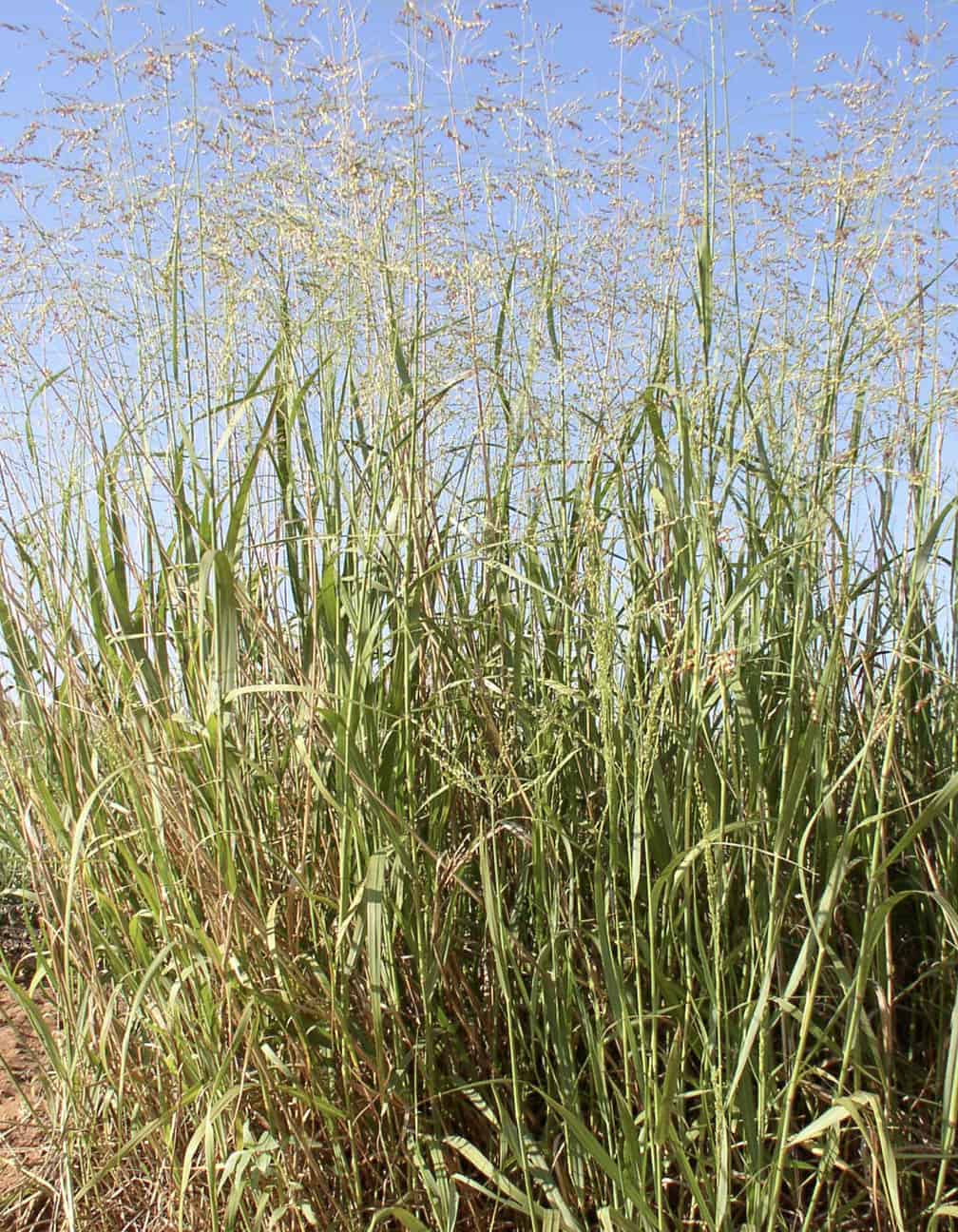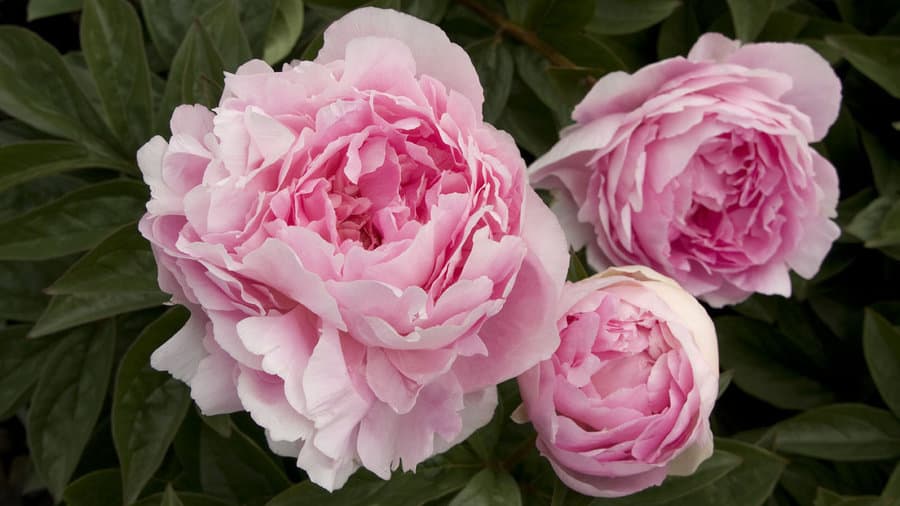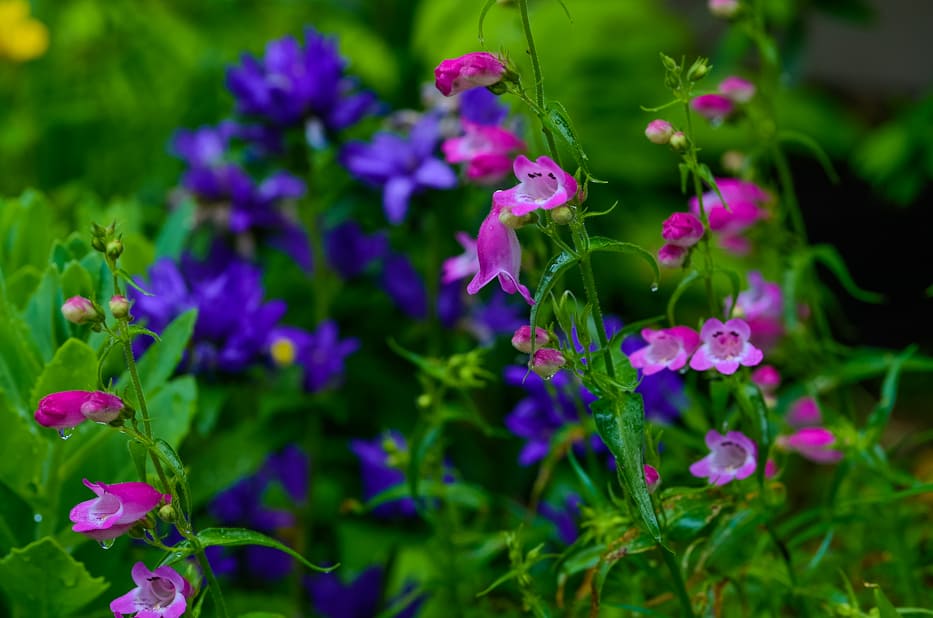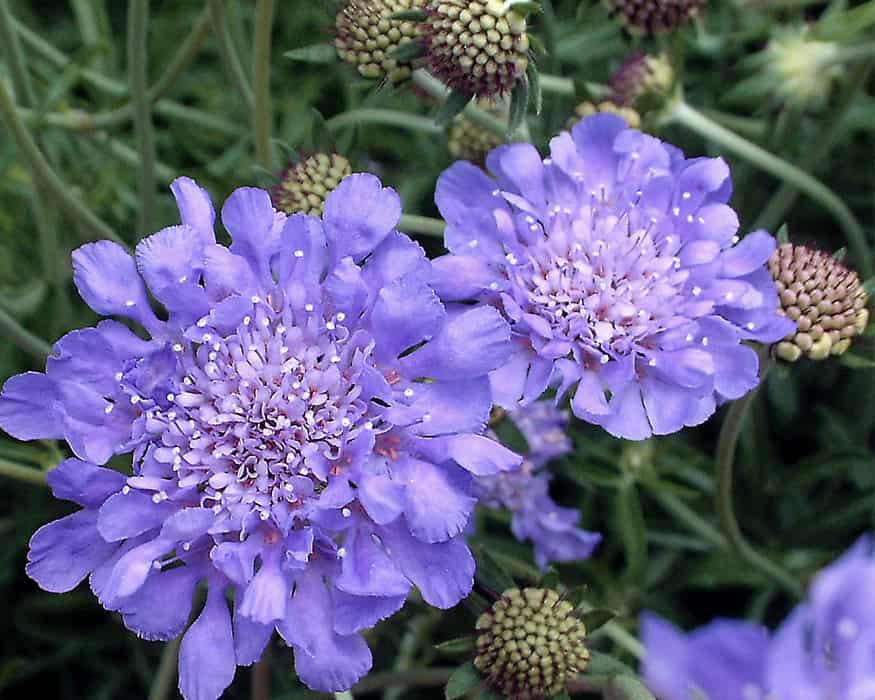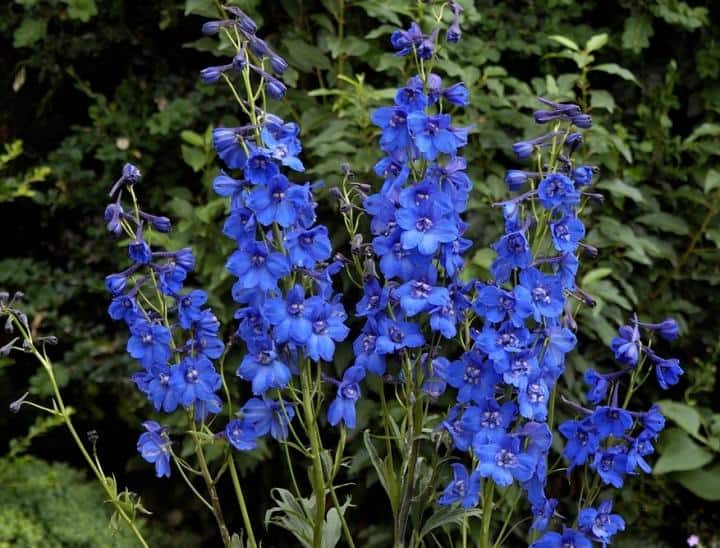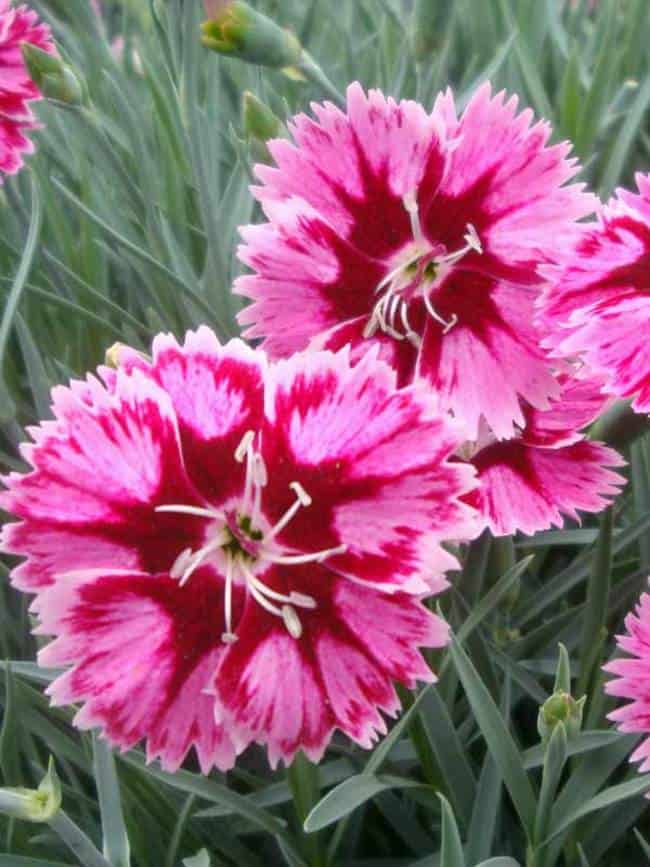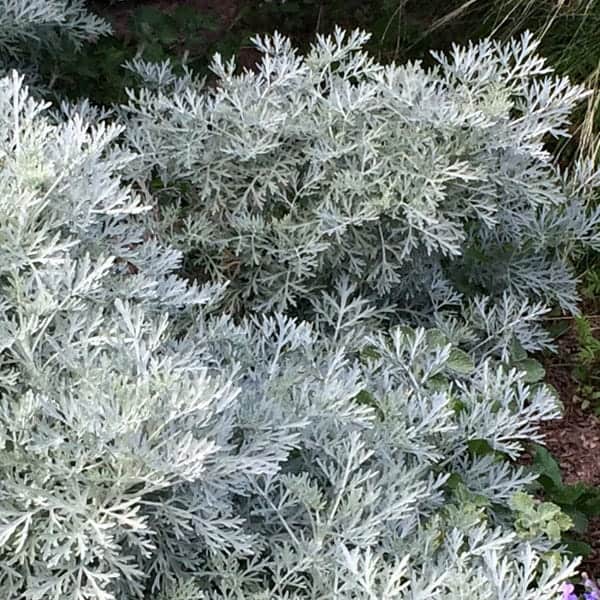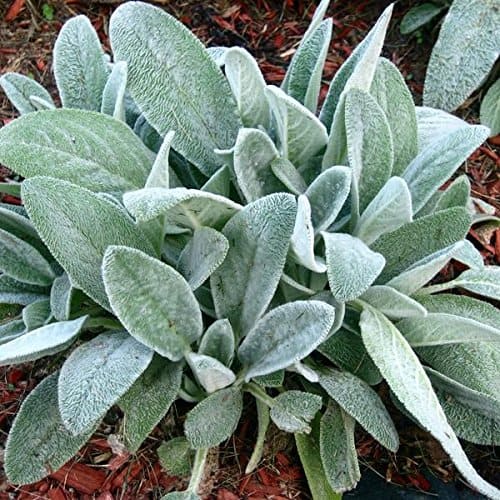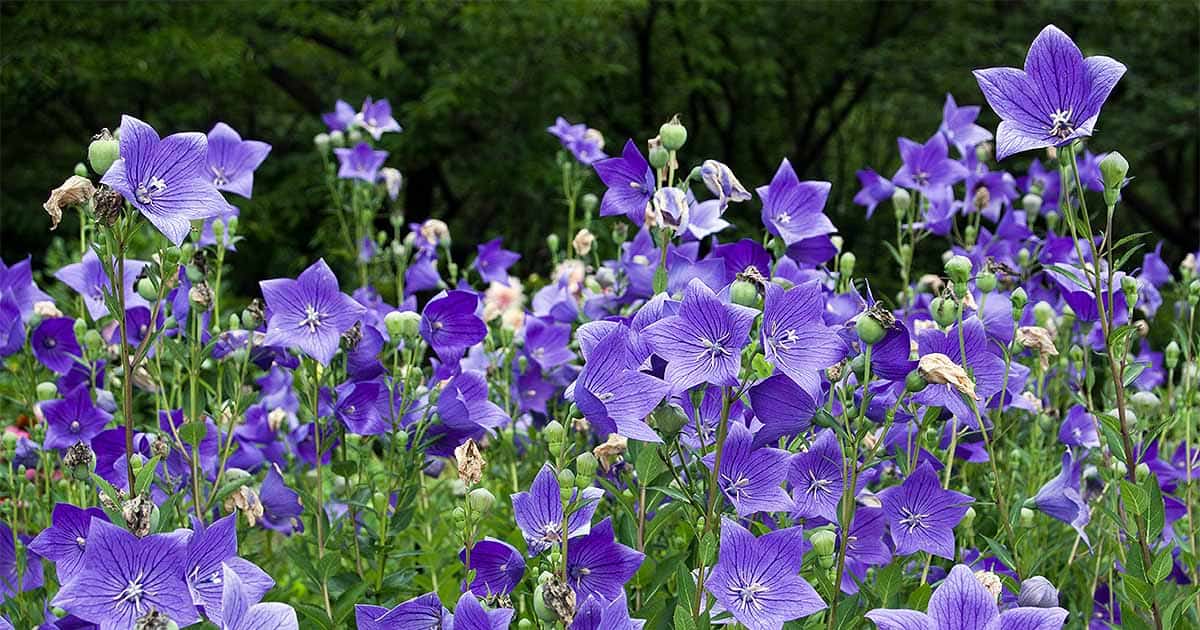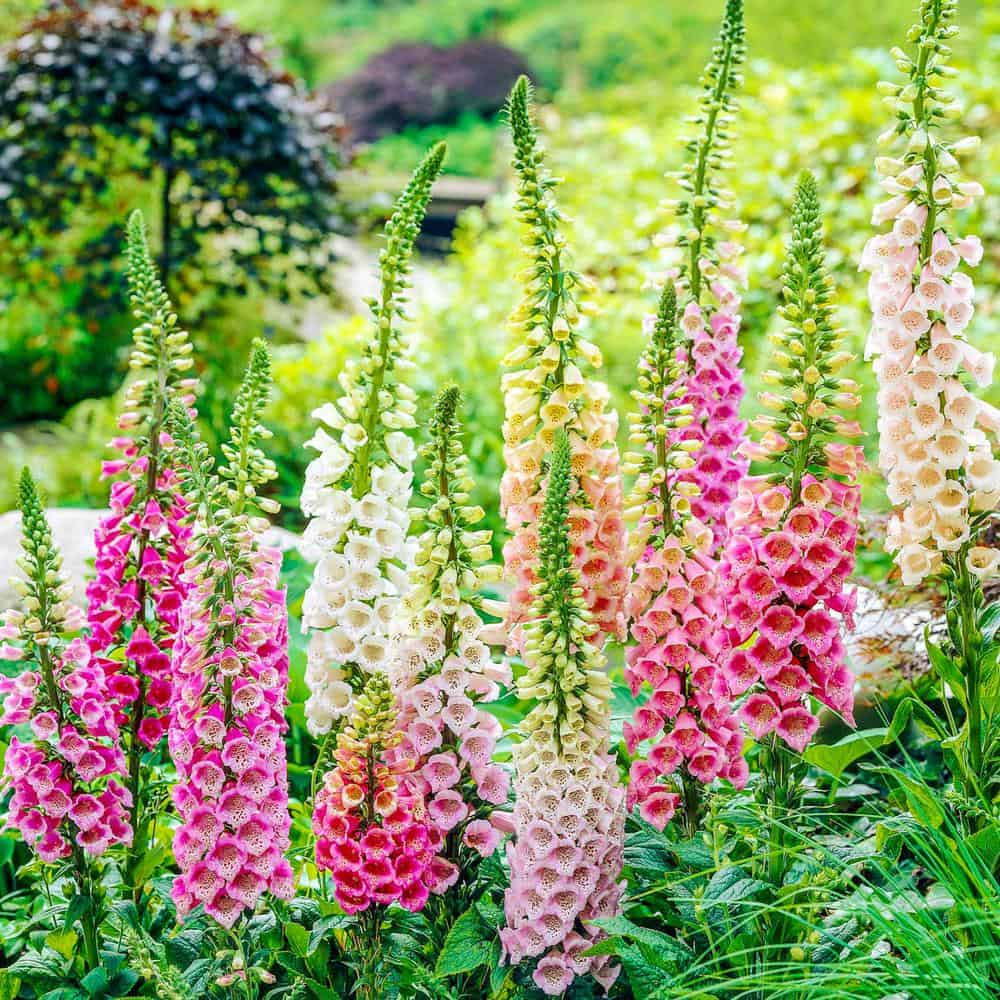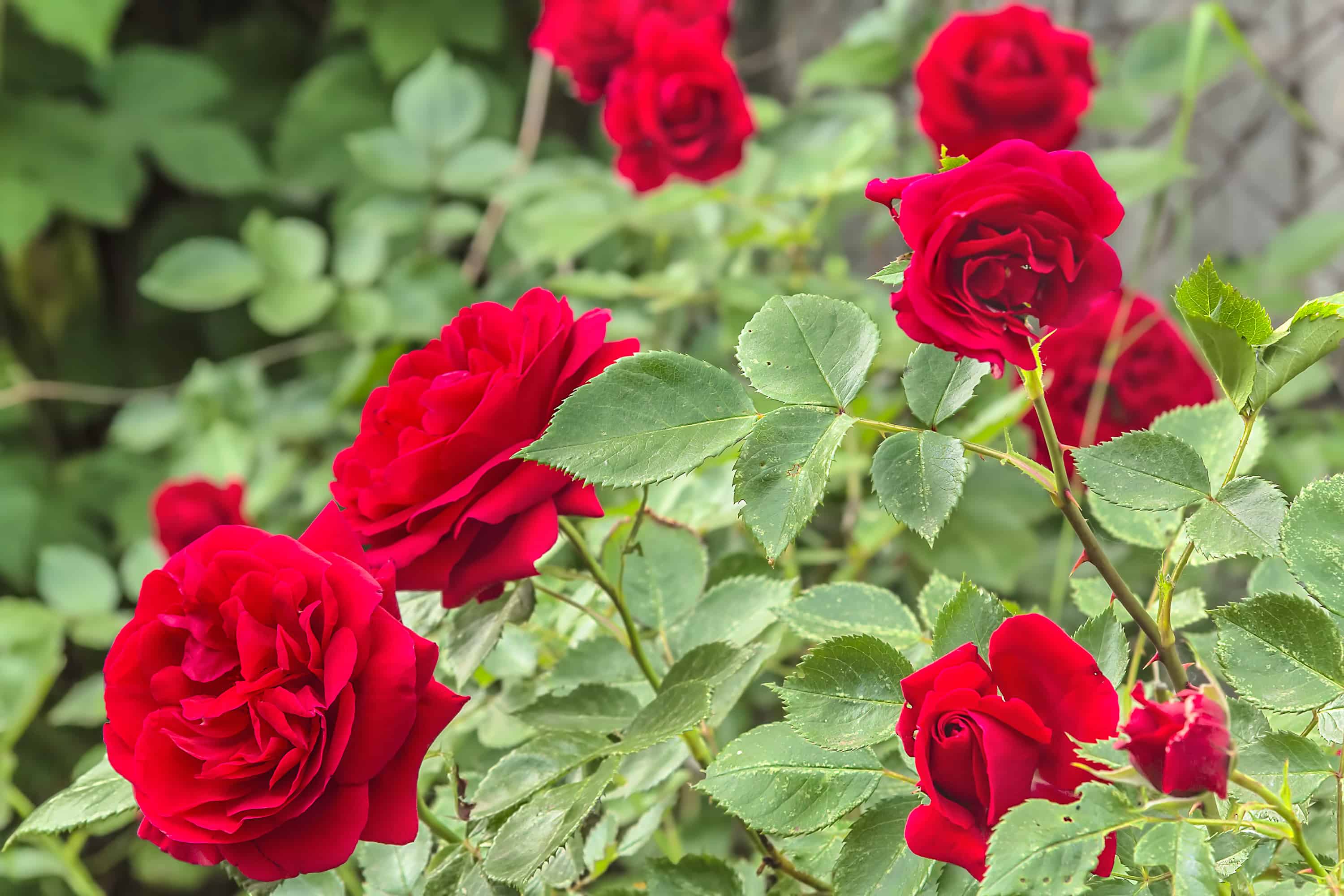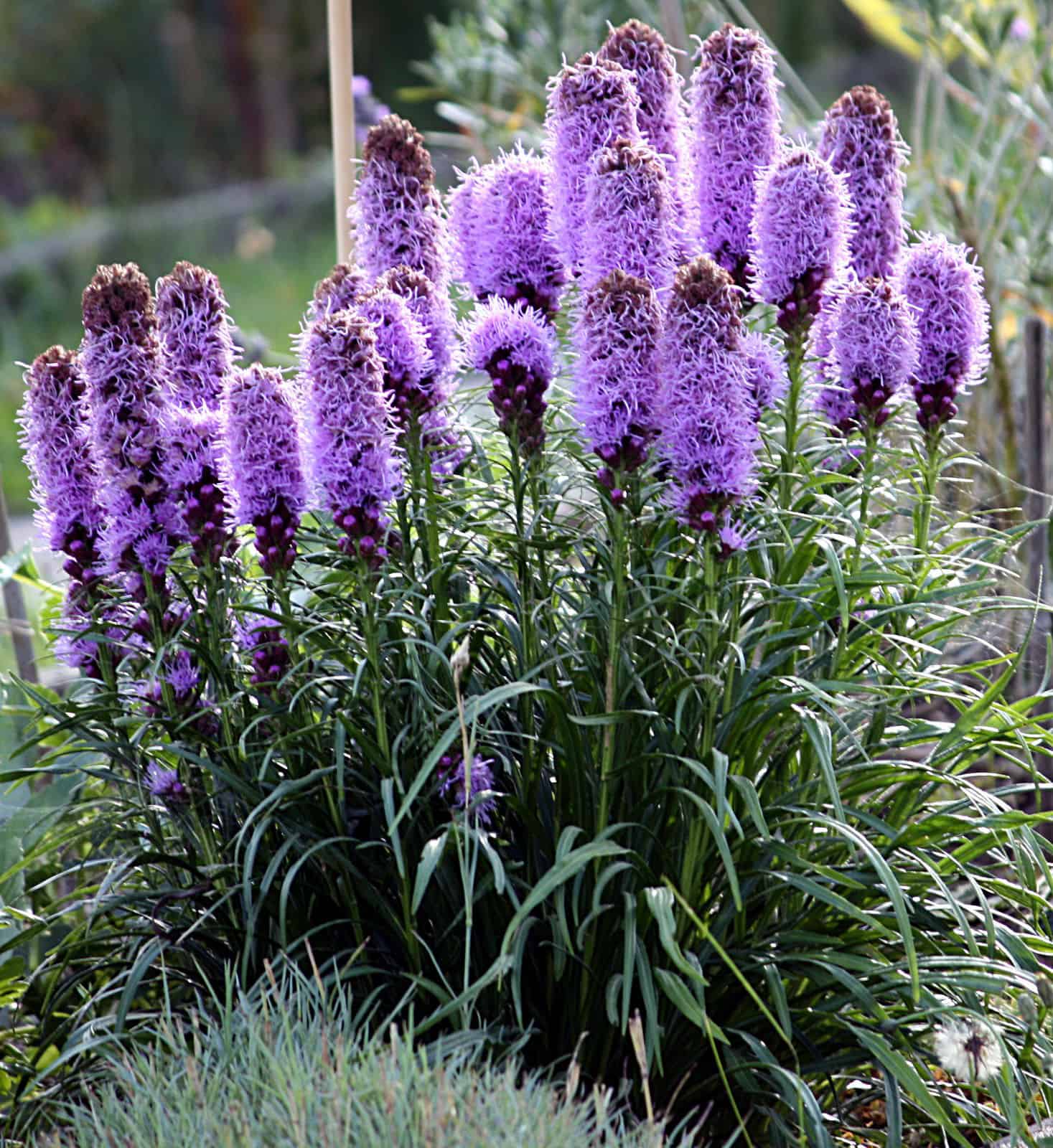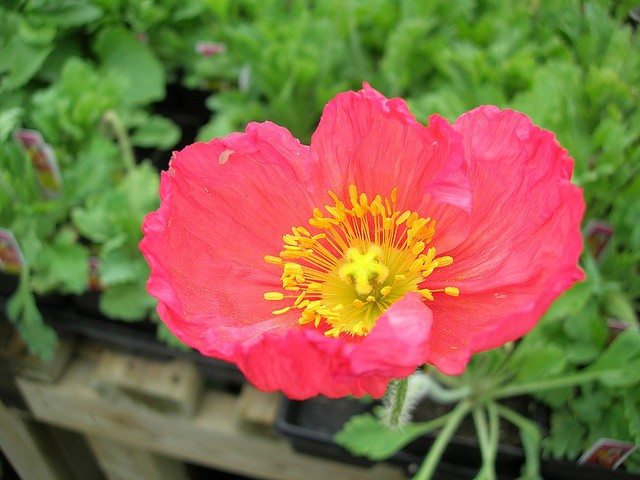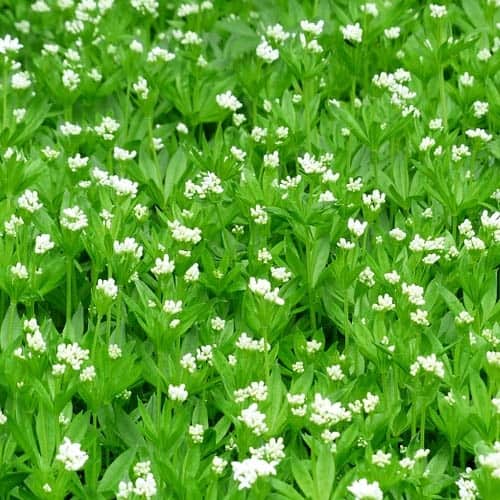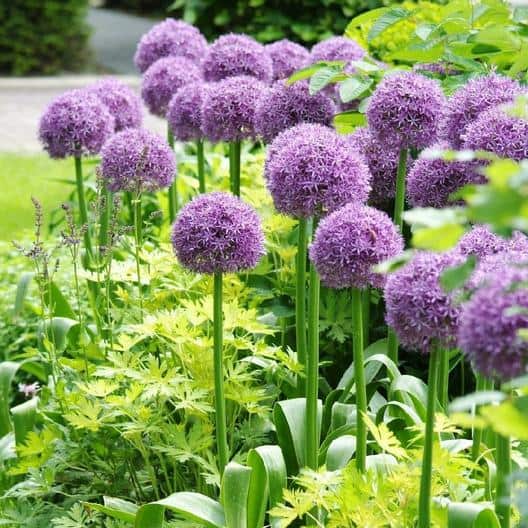Perennials are those that will come back in the spring year after year, provided that you pick a plant that can survive your winters and place it in a location where it will thrive. Mounding perennials form bigger clumps each year while trailing or vining perennials will spread outwards or vertically.
These plants tend to be a bit more expensive since you only need to purchase them once; however, they are a fantastic investment for your landscaping since they will reward you with beautiful flowers and foliage for years to come. When buying perennials, check for USDA hardiness zone, sunlight required, and any special drainage or watering requirements.
1. Hostas
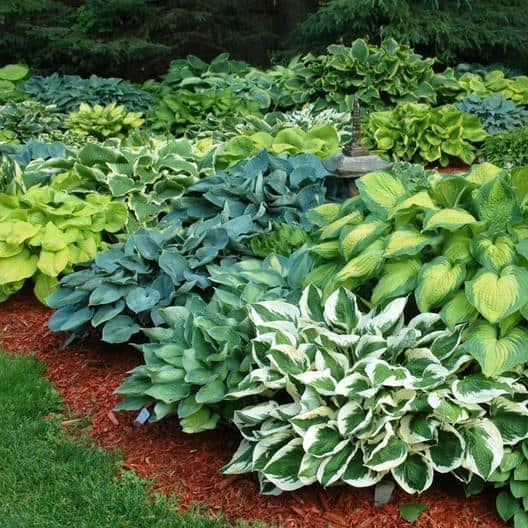
Hostas are one of those magical, rare plants that can not only survive but thrive in part to even full shade. They are common sights around the base of trees, on the north side of houses, and other shady areas. They come in a plethora of leaf shapes and colors, with varieties in shades of blues, greens, chartreuses, and even whites.
Some also come with crinkling or cup-shaped leaves. Propagation is by bulbs, meaning you can easily transplant them or divide them, once they become too dense, in spring or fall. These perennials are easy to care for and hardy.


